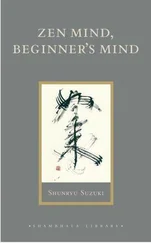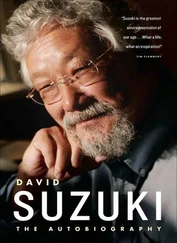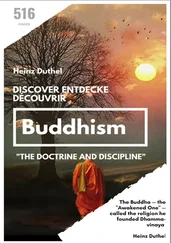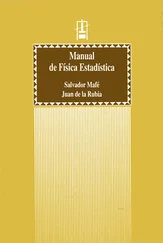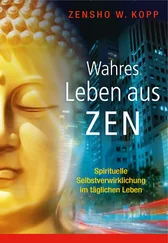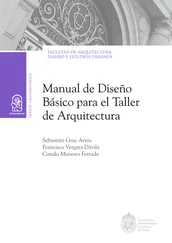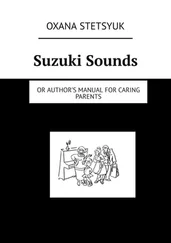Teitaro Suzuki - Manual of Zen Buddhism
Здесь есть возможность читать онлайн «Teitaro Suzuki - Manual of Zen Buddhism» весь текст электронной книги совершенно бесплатно (целиком полную версию без сокращений). В некоторых случаях можно слушать аудио, скачать через торрент в формате fb2 и присутствует краткое содержание. Жанр: Религиоведение, Религия, Руководства, на английском языке. Описание произведения, (предисловие) а так же отзывы посетителей доступны на портале библиотеки ЛибКат.
- Название:Manual of Zen Buddhism
- Автор:
- Жанр:
- Год:неизвестен
- ISBN:нет данных
- Рейтинг книги:3 / 5. Голосов: 1
-
Избранное:Добавить в избранное
- Отзывы:
-
Ваша оценка:
- 60
- 1
- 2
- 3
- 4
- 5
Manual of Zen Buddhism: краткое содержание, описание и аннотация
Предлагаем к чтению аннотацию, описание, краткое содержание или предисловие (зависит от того, что написал сам автор книги «Manual of Zen Buddhism»). Если вы не нашли необходимую информацию о книге — напишите в комментариях, мы постараемся отыскать её.
Manual of Zen Buddhism — читать онлайн бесплатно полную книгу (весь текст) целиком
Ниже представлен текст книги, разбитый по страницам. Система сохранения места последней прочитанной страницы, позволяет с удобством читать онлайн бесплатно книгу «Manual of Zen Buddhism», без необходимости каждый раз заново искать на чём Вы остановились. Поставьте закладку, и сможете в любой момент перейти на страницу, на которой закончили чтение.
Интервал:
Закладка:
3. Hsuan-chuang's translation has this added: “He was delivered from all suffering and misery.”
4. “Empty” ( sunya ) or “emptiness” ( sunyata ) is one of the most important notions in Mahayana philosophy and at the same time the most puzzling for non-Buddhist readers to comprehend. Emptiness does not mean “relativity”, or “phenomenality”, or “nothingness”, but rather means the Absolute, or something of transcendental nature, although this rendering is also misleading as we shall see later. When Buddhists declare all things to be empty, they are not advocating a nihilistic view; on the contrary an ultimate reality is hinted at, which cannot be subsumed under the categories of logic. With them, to proclaim the conditionality of things is to point to the existence of something altogether unconditioned and transcendent of all determination. Sunyata may thus often be most appropriately rendered by the Absolute. When the sutra says that the five Skandhas have the character of emptiness, or that in emptiness there is neither creation nor destruction, neither defilement nor immaculacy, etc., the sense is: no limiting qualities are to be attributed to the Absolute; while it is immanent in all concrete and particular objects, it is not in itself definable. Universal negation, therefore, in the philosophy of Prajna is an inevitable outcome.
5. No eye, no ear, etc., refer to the six senses. In Buddhist philosophy, mind ( manovijnana ) is the special sense-organ for the apprehension of dharma , or objects of thought.
6. No form, no sound, etc., are the six qualities of the external world, which become objects of the six senses.
7. “Dhatu of vision etc.” refer to the eighteen Dhatus or elements of existence, which include the six senses ( indriya ), the six qualities ( vishaya ), and the six consciousnesses ( vijnana ).
8. “Till we come to” ( yavat in Sanskrit, and nai chih in Chinese) is quite frequently met with in Buddhist literature to avoid repetition of well-known subjects. These classifications may seem somewhat confusing and overlapping.
9. “There is no knowledge, no ignorance, etc.” is the wholesale denial of the Twelvefold Chain of Causation ( pratityasamutpada ), which are ignorance ( avidya ), deed ( samskara ), consciousness ( vijnana ), name and form ( namarupa ), six sense-organs ( sadayatana ), contact ( sparsa ), sense-perception ( vedana ), desire ( trishna ), attachment ( upadana ), being ( bhava ), birth ( jati ), and old age and death ( jaramarana ). This Chain of Twelve has been a subject of much discussion among Buddhist scholars.
10. The allusion is of course to the Fourfold Noble Truth ( satya ): 1. Life is suffering ( duhkha ); 2. Because of the accumulation ( samudaya ) of evil karma; 3. The cause of suffering can be annihilated ( nirodha ); 4. And for this there is the path ( marga ).
11. Nabhisamayah is missing in the Chinese translations as well as in the Horyuji MS.
12. For varana all the Chinese have “obstacle”, and this is in full accord with the teaching of the Prajnaparamita. Max Muller's rendering, “envelop”, is not good.
1. Generally known as Kwannon-gyo in Japanese and Kuan-yin Ching in Chinese. It forms the Twenty-fifth Chapter in Kumarajiva's translation of the Saddharma-pundarika , “the Lotus of the Good Law”. Its Sanskrit title is Samantamukha Parivarta . It is one of the most popular sutras in Japan, especially among followers of the Holy Path, including Zen, Tendai, Shingon, Nichiren, etc.
The Sanskrit for Kwannon seems, according to some Japanese authorities, originally to have been Avalokitasvara , and not Avalokitesvara . If so, Kwannon is a more literal rendering than Kwanzeon ( Kuan-shih-yin ) or Kwanjizai ( Kuan-tzu-tsai ). The Bodhisattva Avalokitasvara is “the owner of voice which is viewed or heard”. From him issues a voice which is variously heard and interpreted by all beings, and it is by this hearing that the latter are emancipated from whatever troubles they are in.
The present translation is from Kumarajiva's Chinese. In the reading of the proper names, the Japanese way of pronunciation has been retained.
2. Bodhisattva Akshayamati in Sanskrit, that is, Bodhisattva of Inexhaustible Intelligence.
3. That is, sahaloka , world of patience.
4. “Safety”, or better “faith”.
5. Dharanindhara in Sanskrit, “the supporter of the earth”.
1. Kongokyo in Japanese. The full title in Sanskrit is Vajracchedika-prajna-paramita-sutra. It belongs to the Prajna class of Mahayana literature. Those who are not accustomed to this kind of reasoning may wonder what is the ultimate signification of all these negations. The Prajna dialectic means to lead us to a higher affirmation by contradicting a simple direct statement. It differs from the Hegelian in its directness and intuitiveness.
The present English translation is from Kumarajiva's Chinese version made between 402–412 C.E.
2. Dharma, that is, the object of manovijnana , thought, as form ( rupa ) is the object of the visual sense, sound that of the auditory sense, odour that of the olfactory sense, and so forth.
3. That is, Samadhi of non-resistance. Arana also means a forest where the Yogin retires to practise his meditation.
4. This finishes the first part of the Diamond Sutra as it is usually divided here and passes on to the second part. The text goes on in a similar strain through its remaining section. Indeed, there are some scholars who think that the second part is really a repetition of the first, or that they are merely different copies of one and the same original text, and that whatever variations there are in these two copies are the result of the glosses mixed into the text itself. While I cannot wholly subscribe to this view, the fact is that passages containing similar thoughts recur throughout the whole Prajnaparamita literature. In view of this I quote in the following only such ideas as have not fully been expressed in the first part.
5. Citta stands for both mind and thought. The idea expressed here is that there is no particularly determined entity in us which is psychologically designated as mind or thought. The moment we think we have taken hold of a thought, it is no more with us. So with the idea of a soul, or an ego, or a being, or a Person, there is no such particular entity objectively to be so distinguished, and which remains as such eternally separated from the subject who so thinks. This ungraspability of a mind or thought, which is tantamount to saying that there is no soul-substance as a solitary unrelated “thing” in the recesses of consciousness, is one of the basic doctrines of Buddhism, Mahayana and Hinayana.
1. “Sutra of Heroic Deed”.
1. From The Transmission of the Lamp , XXX.
2. “Entrance by Reason” may also be rendered “Entrance by Higher Intuition”, and “Entrance by Conduct”, “Entrance by Practical Living”.]
3. “Wall-gazing”.
4. Since this translation from the Transmission of the Lamp , two Tun-huang MSS. containing the text have come to light. The one is in the Masters and Disciples of the Lanka ( Leng-chia Shihtzu Chi ), already published, and the other still in MS., which however the present author intends to have reproduced in facsimile before long. They differ in minor points with the translation here given.
1. By Seng-t'san (Sosan in Japanese). Died 606 C.E. Mind = hsin . Hsin is one of those Chinese words which defy translation. When the Indian scholars were trying to translate the Buddhist Sanskrit works into Chinese, they discovered that there were five classes of Sanskrit terms which could not be satisfactorily rendered into Chinese. We thus find in the Chinese Tripitaka such words as prajna , bodhi , buddha , nirvana , dhyana , bodhisattva , etc., almost always untranslated; and they now appear in their original Sanskrit form among the technical Buddhist terminology. If we could leave hsin with all its nuance of meaning in this translation, it would save us from the many difficulties that face us in its English rendering. For hsin means “mind”, “heart”, “soul”, “spirit”—each singly as well as all inclusively. In the present composition by the third patriarch of Zen, it has sometimes an intellectual connotation but at other times it can properly be given as “heart”. But as the predominant note of Zen Buddhism is more intellectual than anything else, though not in the sense of being logical or philosophical, I decided here to translate hsin by “mind” rather than by “heart”, and by this mind I do not mean our psychological mind, but what may be called absolute mind, or Mind.
Читать дальшеИнтервал:
Закладка:
Похожие книги на «Manual of Zen Buddhism»
Представляем Вашему вниманию похожие книги на «Manual of Zen Buddhism» списком для выбора. Мы отобрали схожую по названию и смыслу литературу в надежде предоставить читателям больше вариантов отыскать новые, интересные, ещё непрочитанные произведения.
Обсуждение, отзывы о книге «Manual of Zen Buddhism» и просто собственные мнения читателей. Оставьте ваши комментарии, напишите, что Вы думаете о произведении, его смысле или главных героях. Укажите что конкретно понравилось, а что нет, и почему Вы так считаете.

